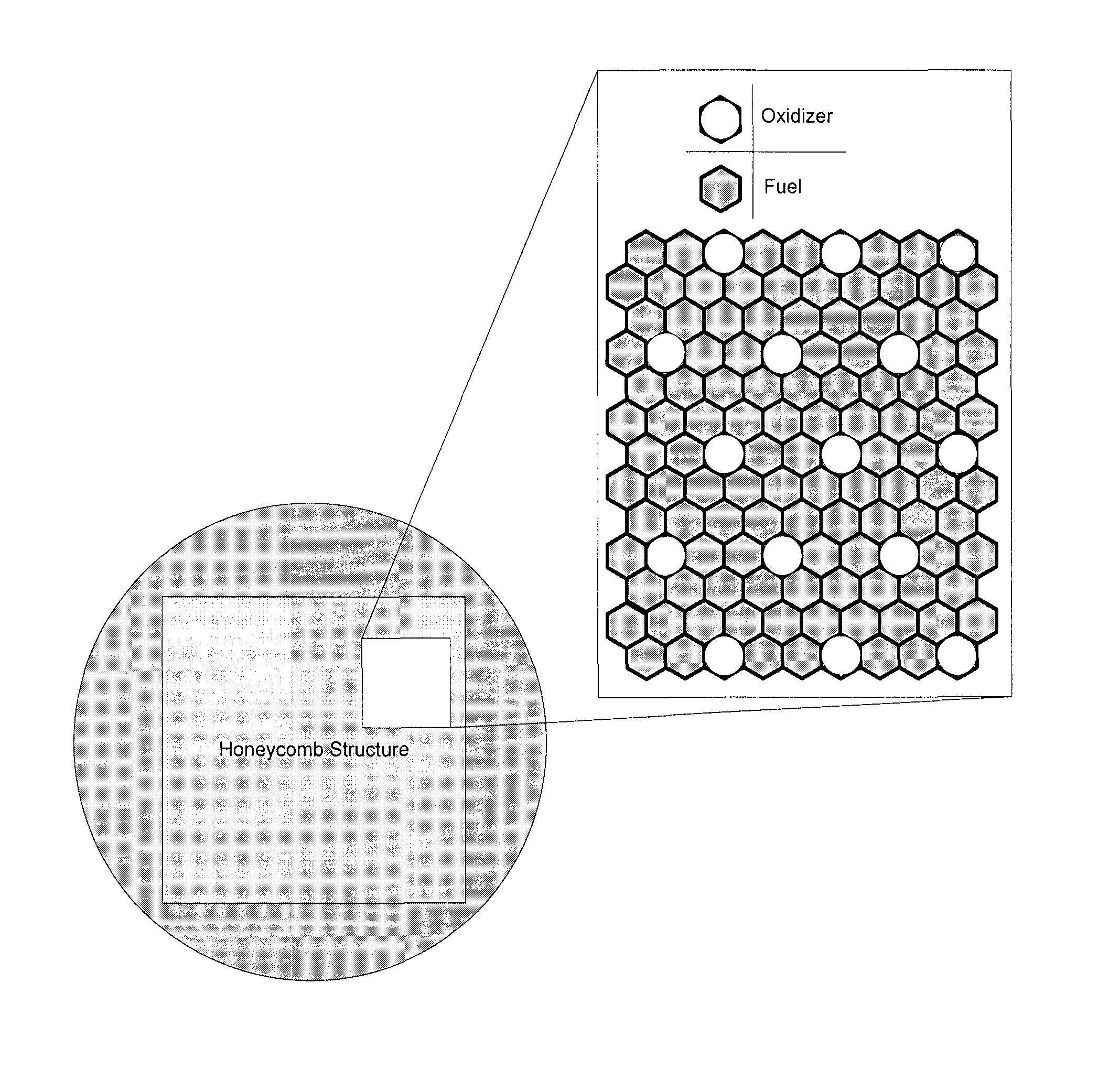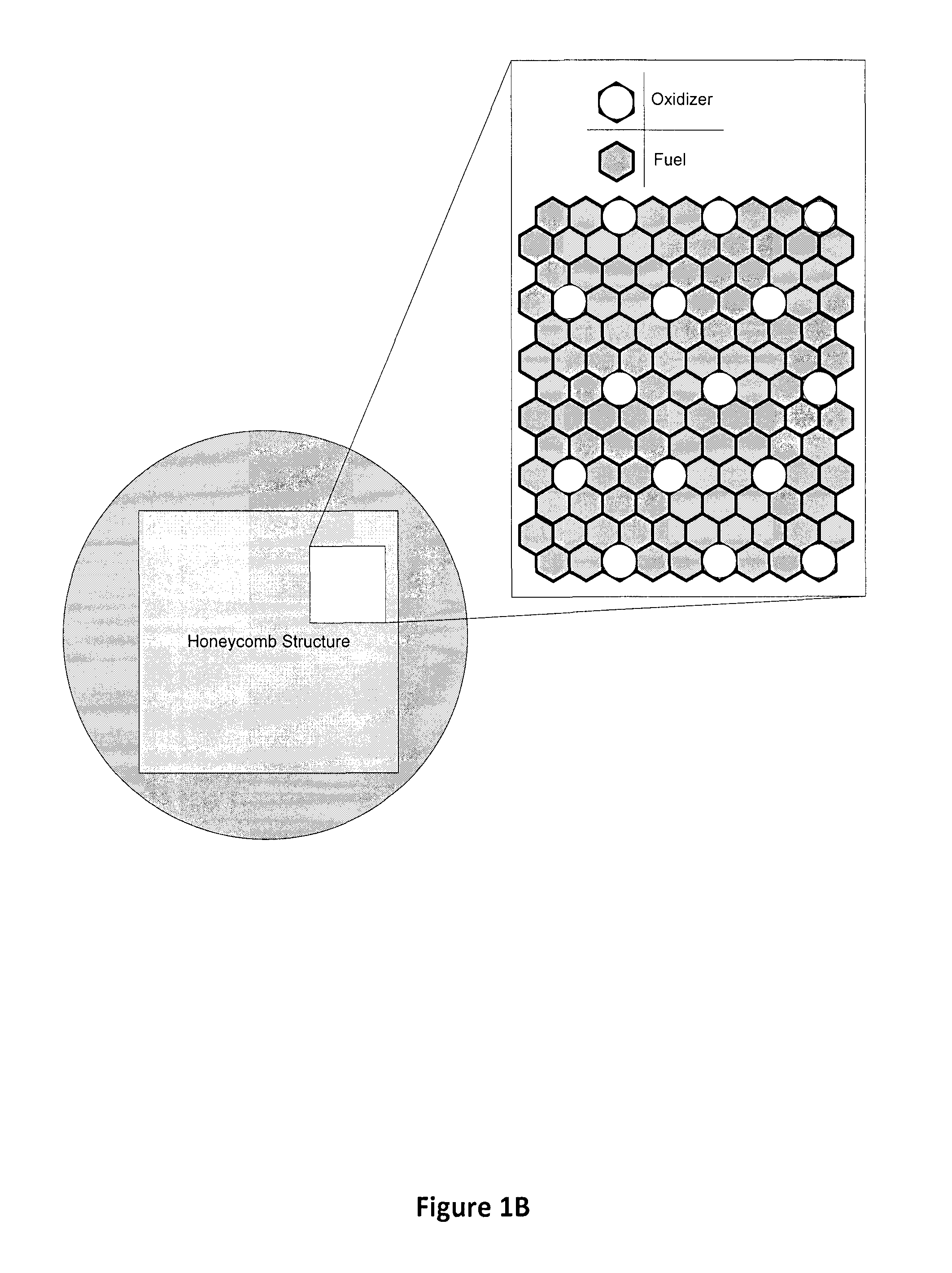Scalable Multiple-Inverse Diffusion Flame Burner for Synthesis and Processing of Carbon-Based and Other Nanostructured Materials and Films and Fuels
- Summary
- Abstract
- Description
- Claims
- Application Information
AI Technical Summary
Benefits of technology
Problems solved by technology
Method used
Image
Examples
example
[0145]Carbon Nanotube Synthesis
[0146]FIG. 3 shows the multiple inverse diffusion flames used for carbon nanotube (CNT) synthesis. Small individual flames are clearly seen with no soot present. Ethylene diluted with nitrogen is used as the fuel source. A quartz cylinder encompasses the entire setup to prevent oxidizer permeation from the ambient. Transition-metal substrates with different compositions are inserted radially at specific locations above the burner to induce catalyst nanoparticle formation (from the substrate) and subsequent CNT growth; the substrate is held at the same position for 10 minutes. FIGS. 4-7 depict the growth of CNTs on different metal substrates. CNTs can also be grown directly on particles, e.g. metal-oxide spinel or carbon particles seeded with transition metal clusters.
[0147]Graphene Synthesis
[0148]Using the multiple-inverse-diffusion-flame burner, graphene layers on nickel and copper foils have been synthesized. Since the as-received metal foils invaria...
PUM
| Property | Measurement | Unit |
|---|---|---|
| Temperature | aaaaa | aaaaa |
| Pressure | aaaaa | aaaaa |
| Concentration | aaaaa | aaaaa |
Abstract
Description
Claims
Application Information
 Login to View More
Login to View More - R&D
- Intellectual Property
- Life Sciences
- Materials
- Tech Scout
- Unparalleled Data Quality
- Higher Quality Content
- 60% Fewer Hallucinations
Browse by: Latest US Patents, China's latest patents, Technical Efficacy Thesaurus, Application Domain, Technology Topic, Popular Technical Reports.
© 2025 PatSnap. All rights reserved.Legal|Privacy policy|Modern Slavery Act Transparency Statement|Sitemap|About US| Contact US: help@patsnap.com



